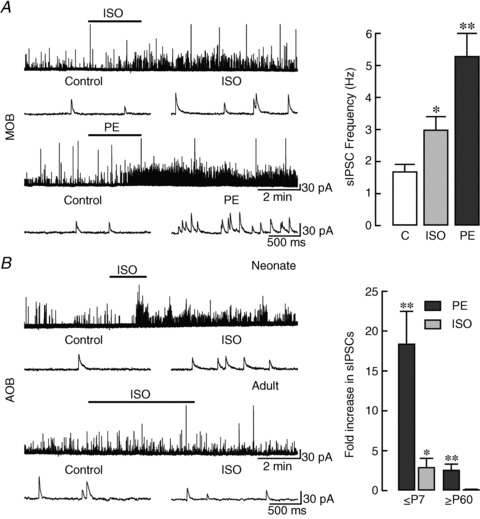Figure 2. NA increases sIPSC frequency in MCs by activating α1- and β-ARs in an age-dependent manner.

A, left panel: recording of sIPSCs in an MC in the MOB of a P14 slice. Top traces: ISO (10 μm), a β-AR agonist, produced a ∼1-fold increase in sIPSC frequency (control: 0.5 Hz, ISO: 1.2 Hz). Bottom traces: the effect of PE (10 μm), an α1-AR agonist, was much greater in the same cell, increasing sIPSC frequency by ∼15-fold (control: 0.6 Hz, PE: 10.2 Hz). Representative traces in an expanded time scale, before and after drug application, are shown below. Right panel: summary of the magnitude of the α1- and β-AR-mediated effects on sIPSC frequency in MCs of the MOB. Though both ISO and PE increased the frequency of sIPSCs, the effect of PE was larger (*P < 0.00002; **P < 0.000001). The reported averages are from cells in P14–28 slices where both PE and ISO were applied (n= 21). B, left panel: recordings of sIPSCs from MCs in the AOB of slices from P4 (neonate, top traces) and P70 (adult, bottom traces) animals. While β-AR activation produced large increases in sIPSC frequency in young mice, ISO had no effect in older animals. Representative traces in an expanded time scale, before and after ISO application, are shown below. Right panel: summary of the effects of PE (black bars) and ISO (grey bars) on sIPSC frequency in the AOB of young and old mice. In both young (≤P7; n= 14) and old (≥P60; n= 10) mice, PE produced a significant increase in sIPSC frequency (**P < 0.0002). In contrast, in the same cells ISO significantly increased the frequency only in the younger group (*P < 0.05). AR, adrenergic receptor; AOB, accessory olfactory bulb; ISO, isoproterenol; MC, mitral/tufted cells; MOB, main olfactory bulb; PE, phenylephrine; sIPSC, spontaneous IPSCs.
